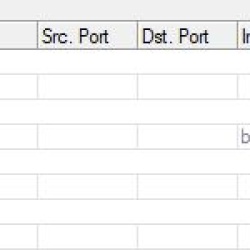I first created an address-list and put a few IPs in there, then I set a firewall rule in order to drop any IPs but those of my list to reach my server:
Code: Select all
;;; Block every IPs to Server but Server IPs chain=forward action=drop connection-state=new dst-address=192.168.3.10
src-address-list=!Server-IPs log=yes log-prefix=""
(I don't know why my image doesn't show up above correctly. Anyway it's a thumbnail, just click on it to see it)
Unfortunately it seems not to be working even though I see counters for it.
I mean, Other devices that are not in the list can reach the server's services' weblogin pages, i.g. 192.168.3.10:9000 (portainer) or 192.168.3.10:32400 (plex server dashboard)
I am still wondering what I did wrong. Could you help me please?
Thanks


